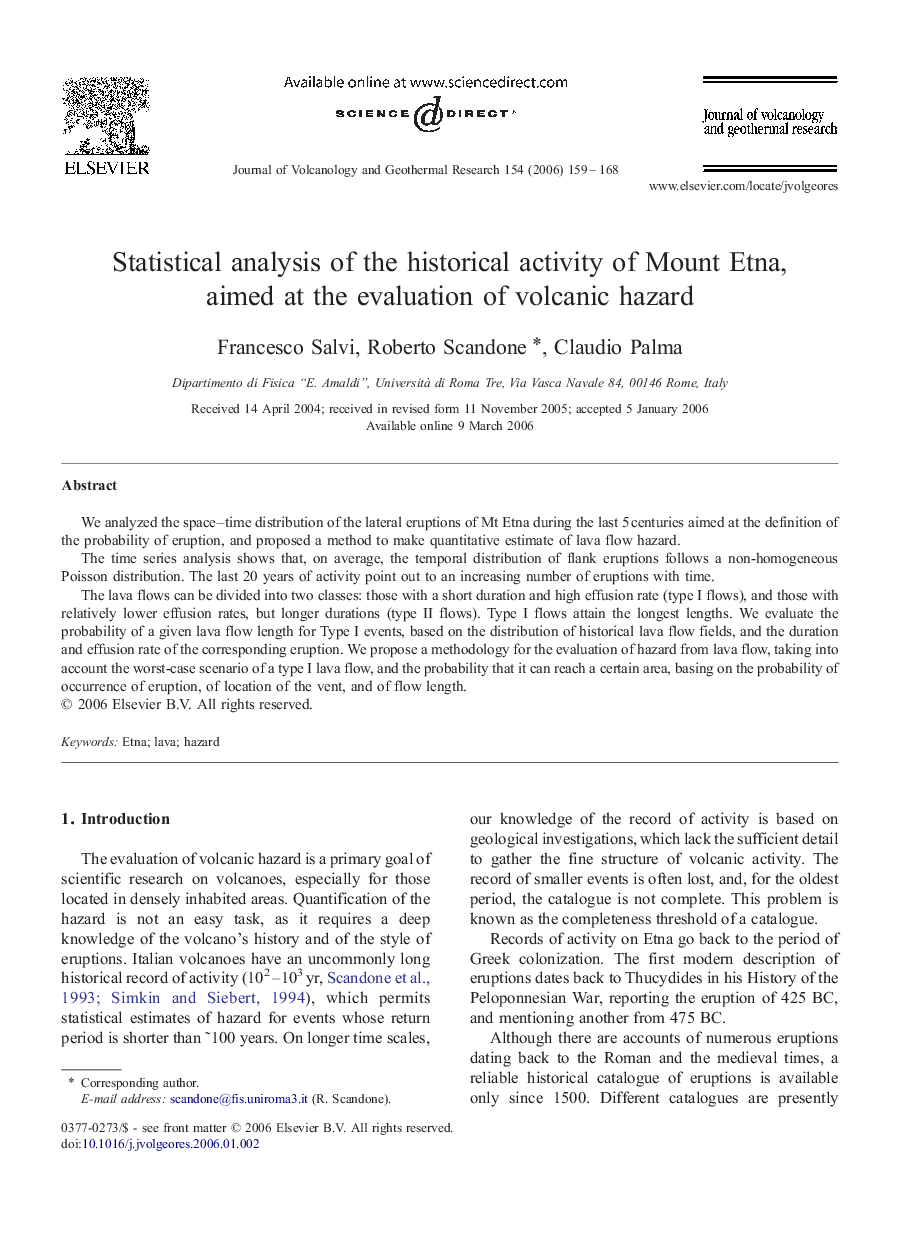| کد مقاله | کد نشریه | سال انتشار | مقاله انگلیسی | نسخه تمام متن |
|---|---|---|---|---|
| 4715055 | 1638477 | 2006 | 10 صفحه PDF | دانلود رایگان |

We analyzed the space–time distribution of the lateral eruptions of Mt Etna during the last 5 centuries aimed at the definition of the probability of eruption, and proposed a method to make quantitative estimate of lava flow hazard.The time series analysis shows that, on average, the temporal distribution of flank eruptions follows a non-homogeneous Poisson distribution. The last 20 years of activity point out to an increasing number of eruptions with time.The lava flows can be divided into two classes: those with a short duration and high effusion rate (type I flows), and those with relatively lower effusion rates, but longer durations (type II flows). Type I flows attain the longest lengths. We evaluate the probability of a given lava flow length for Type I events, based on the distribution of historical lava flow fields, and the duration and effusion rate of the corresponding eruption. We propose a methodology for the evaluation of hazard from lava flow, taking into account the worst-case scenario of a type I lava flow, and the probability that it can reach a certain area, basing on the probability of occurrence of eruption, of location of the vent, and of flow length.
Journal: Journal of Volcanology and Geothermal Research - Volume 154, Issues 3–4, 15 June 2006, Pages 159–168